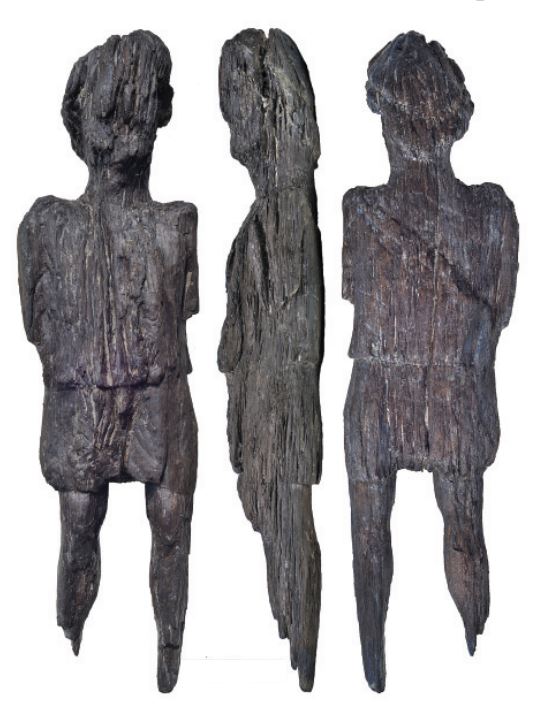Railway construction project in UK turns up Roman carving
By ANGUS McNEICE in London | China Daily Global | Updated: 2022-01-14 09:44

A rare and well-preserved wood carving dating from the early Roman era has been unearthed during work on a high-speed rail development in the United Kingdom.
The human-like figure, which stands 67 centimeters tall and is 18 centimeters wide, was carved from a single piece of wood, and details including a hat and the outline of a tunic are still clearly visible.
Digs in the UK most frequently turn up hardier relics from Roman occupation of Britain, including pottery fragments, coins and masonry. Locating a perishable artefact in such good condition is exceedingly rare, and has drawn comparisons with the discovery of the Dagenham idol, a wooden figure from the late Neolithic period or early Bronze Age that was unearthed close to the River Thames exactly 100 years ago.
"This is a truly remarkable find which brings us face to face with our past," said Jim Williams, who is senior science advisor for UK heritage organization Historic England. "The quality of the carving is exquisite and the figure is all the more exciting because organic objects from this period rarely survive."
The figure was discovered in a waterlogged Roman ditch in a field near Twyford in Buckinghamshire, where developers are preparing the way for a train link called HS2, which will run between London and Birmingham.
One of the largest archeology programs in UK history is taking place alongside the building project, which has so far turned up the remnants of an Iron Age settlement, a hoard of 300 coins dating back to the first century BC, and the remains of a medieval church, among other finds.
Helen Wass, head of Heritage at HS2 said the "unprecedented archaeology program" has provided "a great wealth of new information about our past".
"In Buckinghamshire, our careful work has enabled us to build a much greater understanding of how the landscape was used by our ancestors, especially during the Roman period, and it is brought to life further through incredible artefacts like this figure," Wass said.
Experts say the figure is likely from the early Roman period, given the style of the carving and the tunic-like clothing, while shards of pottery dating from 43-70 AD were also discovered in the same ditch. A small fragment of the carving has been sent for radiocarbon dating, which will give a more accurate estimate of its age.
Archaeologists cannot be sure about the significance of the figure or what it was used for. However, one theory is that such totems were religious offerings.
"Not only is the survival of a wooden figure like this extremely rare for the Roman period in Britain, but it also raises new questions about this site," said Iain Williamson, an archaeologist for rail contractor Fusion JV. "Who does the wooden figure represent, what was it used for and why was it significant to the people living in this part of Buckinghamshire during the 1st century AD?"
The Roman occupation of Britain began in AD 43 and lasted close to four centuries. Development during that period has provided rich pickings for archeologists, as the Romans oversaw a huge growth in road building, industrial production, construction and urban planning.
























